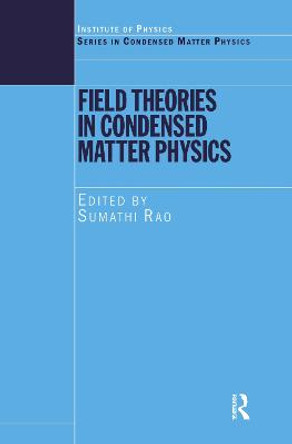Description
This book provides a review of the application of quantum field theory to condensed matter systems, introducing important techniques in condensed matter theory.
About the Author
Ramamurti Shankar is the John Randolph Huffman Professor of Physics at Yale University, Connecticut, with a research focus in theoretical condensed matter physics. He has held positions at the Aspen Center for Physics, the American Physical Society and the American Academy of Arts and Sciences. He has also been a Visiting Professor at several universities including Massachusetts Institute of Technology, Princeton University, New Jersey, University of California, Berkeley and Indian Institute of Technology, Madras. Recipient of both the Harwood Byrnes and Richard Sewell Teaching Prize at Yale University (2005) and the Julius Edgar Lilienfeld Prize of the American Physical Society (2009), he has also authored several books: Principles of Quantum Mechanics (1994), Basic Training in Mathematics (2008), and Fundamentals of Physics Volume I and Volume II (2014 and 2016).
Reviews
'The study of minimally complicated models is ... central to the field of condensed-matter physics. Those models, and the tools needed to understand them, are the subject of Ramamurti Shankar's new book, Quantum Field Theory and Condensed Matter: An Introduction. What is different about Shankar's text? For one thing, it is shorter [than his competitors]. Accordingly, Shankar's book is less ambitious in its aim and more selective in its content. That makes it both a more introductory text and a friendlier read. It will be a good textbook for a one-semester first-year graduate course.' Mike Stone, Physics Today
'[The book] provides a broad review of many different techniques and models used daily in the theoretical condensed matter community. The presentation is done in a quite individual and elegant way ... the book can be used self-consistently as a source for an advanced statistical mechanics course at the master degree level ... Shankar covers a wide variety of models ranging from the celebrated classical two-dimensional Ising model ... to the XY model and Zq gauge theories, and finally to models developed for the quantum Hall effect such as the Bohm-Pines or Chern-Simons theories. In the middle of the book, there are six chapters giving an extensive survey on the renormalization group theory (a book within a book, as Daniel Arovas wrote) and two self-contained chapters dealing with bosonization. Again, here, these chapters may be used self-consistently in order to teach the material.' Acta Crystallographica Section A: Foundations Advances
'Since the Nobel Prize-winning work of Ken Wilson in the 1970s, quantum field theory has been a fundamental tool in condensed matter theory ... Shankar presents more than enough material for a one- or two-semester course, and the book could be used to teach at a variety of levels. There is a substantial amount of classic material: the Ising model and critical phenomena, the relation of the Feynman path integral to statistical mechanics, and the renormalization group. The text ventures beyond these, with treatments of coherent state path integrals, gauge theories, duality, and bosonization. Topics of great modern importance include Majorana fermions and the quantum Hall effect. It is notable that both the Lagrangian and Hamiltonian forms of lattice models are treated. This clear, authoritative text should be available at any institution where modern condensed matter physics is studied.' M. C. Ogilvie, Choice
'... the first few chapters are about techniques one has to learn before learning the real techniques. The book starts with a review of Thermodynamics and Statistical Mechanics. The Ising model is discussed next. ... [Other] topics covered are Statistical to Quantum Mechanics ... Quantum to Statistical Mechanics ... Feynman Path Integral, Coherent State Path Integrals, Two dimensional Ising model and its exact solution and Majorana Fermions. Further Gauge Theories, The Renormalization Group and Critical Phenomena, different views of Renormalization, Bosonization and Duality and Triality are described. The final Chapter covers Techniques for Quantum Hall Effect. Each chapter ends with a list of references for further reading. Overall, a very useful book for researchers.' T. C. Mohan, zbMATH
'The next best analogy to relativistic quantum field theory is the concept of quasi-particles like phonons, excitons, plasmons and the like which emerge in solid state physics. ... Shankar's book goes much deeper than this simple analogy. It examines topics like Majorana fermions, gauge theory, the renormalization group equation, bosonization and triviality. These topics are well known to anybody familiar with the relativistic version of quantum field theory. They ... [also] play a role ... in condensed matter physics, as the author skillfully explains, touching hereby standard themes of solid state physics like superconductivity, the Ising and Hubbard model and the Hall effect ... Every chapter is accompanied by a brief introduction ... This is interlaced with remarks on personal experiences of the author. ... [the] personal style ... is a pedagogical highlight. ... The book is perfect ...' Marek Nowakowski, Mathematical Reviews
Book Information
ISBN 9780521592109
Author Ramamurti Shankar
Format Hardback
Page Count 450
Imprint Cambridge University Press
Publisher Cambridge University Press
Weight(grams) 1050g
Dimensions(mm) 254mm * 181mm * 24mm







